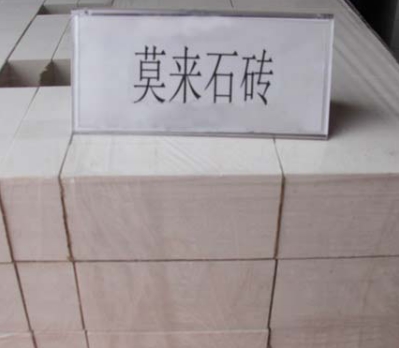- 10
- Feb
What are the ingredients of mullite bricks?
What are the ingredients of mullite bricks?
The ingredients can be determined according to the Al2O3 content determined by the conditions of use. At present, the common ingredient methods are:
①Synthetic mullite (sintered or fused) is aggregate + synthetic mullite fine powder;
②Synthetic mullite (sintered or fused) is aggregate + synthetic mullite fine powder + Al2O3 fine powder + high-purity clay powder;
③Synthetic mullite (sintered or fused) and fused white corundum are aggregate + synthetic mullite fine powder + Al2O3 fine powder + high-purity clay powder. The particle size ratio should be prepared according to the ingredient principle of “large at both ends and small in the middle”. Use sulfite pulp waste liquid or polyaluminum chloride or polyphosphate as binding agent. After being evenly mixed, it is formed under high pressure and fired in a high temperature kiln. The firing temperature is determined by the content of Al2O3 in the refractory brick. Between 1600~1700℃.
Zirconium mullite bricks are fused cast refractory products made of mullite and zirconia. Zirconium mullite fused cast brick has a dense crystal structure, high softening temperature under load, good thermal stability, high mechanical strength at room temperature and high temperature, good wear resistance, good thermal conductivity, and excellent resistance to erosion.

Fe2O3 has a certain solid solubility in mullite and corundum at high temperature, forming a finite solid solution. Its solid solubility in corundum is higher than that in mullite, and the crystal lattice of mullite and corundum grows due to the formation of solid solution. The initial melting temperature of Fe2O3 for Al2O3-SiO2 materials is related to the Al2O3 content in the system or the ratio of Al2O3/SiO2. When Al2O3/SiO2<2.55, the initial melting temperature is 1380℃. If Al2O3/SiO2>2.55, the initial melting temperature is 1380℃. The melting temperature is increased to 1460℃, and gradually increases with the increase of its Al2O3 content. In a reducing atmosphere, Fe2O3 is reduced to FeO and desolubilizes into the glass phase, and the incipient melting temperature of the system drops to 1240°C and 1380°C, respectively.
With the increase of Al2O3 content in mullite bricks, its high temperature performance improves; while the amount of solvent increases, the high temperature performance decreases. Accordingly, strictly controlling the content of impurity oxides, especially the content of K2O, Na2O and Fe2O3, is an important measure for obtaining high-performance and high-purity mullite bricks. Used in slag or gas environment containing alkali components, it has a serious corrosive effect on mullite refractory bricks.
